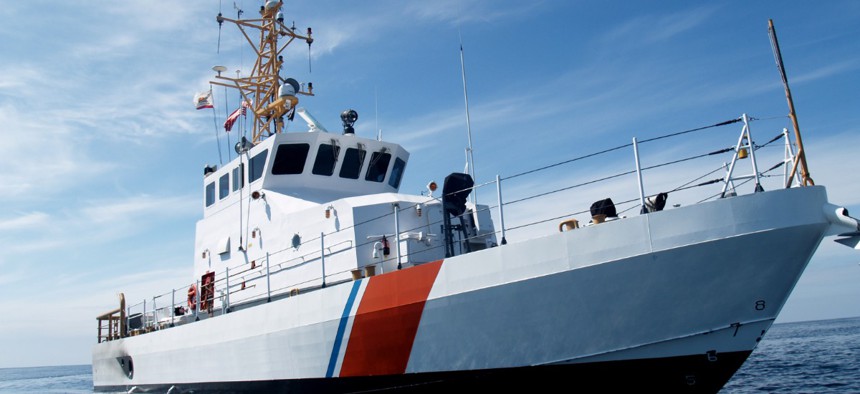Coast Guard Starts Process of Upgrading Its Biometrics At Sea System

A United States Coast Guard Cutter of the Marine Protector class. This is an 87 'vessel capable of 30+ knots and it is used for law enforcement, and search and rescue operations. RXrenesis8/istockphoto
The BASS system enables officers to collect biometrics from detainees at sea and match that information against the Homeland Security database.
The U.S. Coast Guard is preparing to upgrade its biometrics collection system and wants to know what the current marketplace looks like.
The Biometrics At Sea System, or BASS, program started in 2006 with a proof of concept and has since grown to be the primary identification method for Coast Guard officers dealing with detainees at sea. The Coast Guard is looking to upgrade to BASS 3.0 and issued a request for information Wednesday to start the process.
The system is used to process unidentified people taken into custody at sea, primarily as part of Alien and Migrant Interdiction Operations, or AMIO.
The current system includes a handheld device used to record biographical information—including name, date of birth, sex and nationality—and take a photo and fingerprint reading of the detainee, according to a 2016 privacy impact assessment.
That information is transferred to a laptop onboard the ship, formatted and moved onto an encrypted external hard drive. That drive is then connected to a workstation on the Coast Guard’s secure network, then sent over encrypted mail to the Homeland Security Department’s Automated Biometric Identification System, or IDENT, which itself is soon to be replaced by a new cloud-based system: the Homeland Advanced Recognition Technology, or HART, system.
The DHS biometric database then returns a positive hit or a “not match response” to the Coast Guard users.
“Depending on the result of the IDENT match, the USCG Command Center instructs cutter personnel to detain the alien for prosecution, repatriate the alien, or take other appropriate actions,” according to the privacy assessment.
The privacy document also notes all information collected through BASS is stored in IDENT—and, in the future, HART—then deleted from the handheld device, hard drives and networked workstations.
The privacy assessment notes the program “does not intentionally capture biometrics from U.S. citizens.” While the Coast Guard does pick up U.S. citizens at times as part of their law enforcement duties, “The USCG does not collect biometric information from any individual providing appropriate documentation to verify his or her status within the United States unless there are reasonable grounds to suspect such documents may be fraudulent,” the PIA states.
The request for information looks to kick off the acquisition process with five goals:
- Assess the current marketplace and existing industry capabilities.
- Identify and assess the major risks to the acquisition.
- Identify and mitigate any potential barriers to competition.
- Identify potential sources and their respective socio economic status.
- Determine industry data/information needs to support proposal preparation.
Responses are due by 2 p.m. July 23. Questions should be submitted by 2 p.m. July 9.






